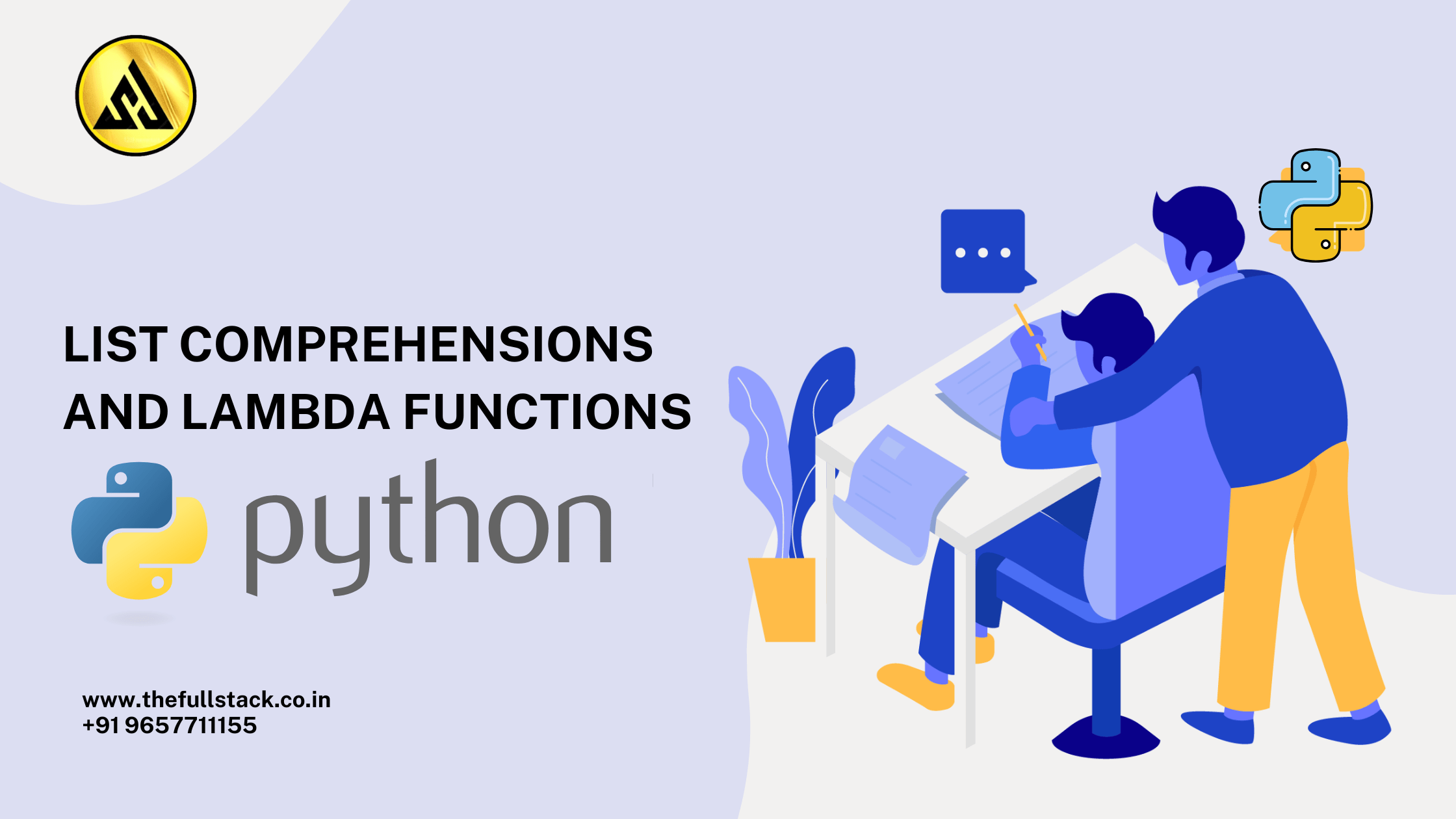
List Comprehensions and Lambda Functions
Python is adored for its elegance and simplicity. This elegance is highlighted by two features: Lambda Functions and List Comprehensions. These resources aid in the creation of clear, understandable, and effective code. We’ll go into great detail on their definition, operation, and applications in this blog.
What Are List Comprehensions?
When generating a new list from an existing iterable (such as a list, range, or string), list comprehensions offer a more concise syntax.
Basic Syntax:
[expression for item in iterable if condition]
You can also read for:- Lists, Tuples, Sets, and Dictionaries in Python
Example: Creating a list of squares
squares = [x**2 for x in range(10)]
print(squares)
# Output: [0, 1, 4, 9, 16, 25, 36, 49, 64, 81]
List Comprehensions with Conditions
You can add conditions to filter items.
even_squares = [x**2 for x in range(10) if x % 2 == 0]
print(even_squares)
# Output: [0, 4, 16, 36, 64]
Multiple Conditions:
filtered = [x for x in range(20) if x % 2 == 0 if x % 3 == 0]
print(filtered)
# Output: [0, 6, 12, 18]
Nested Loops in List Comprehensions
List comprehensions can even contain nested loops!
pairs = [(x, y) for x in [1, 2, 3] for y in [4, 5]]
print(pairs)
# Output: [(1, 4), (1, 5), (2, 4), (2, 5), (3, 4), (3, 5)]
Benefits of List Comprehensions
- Shorter than conventional loops
- Both expressive and readable
- Frequently quicker than loop adding
What Are Lambda Functions?
A lambda function is a little function that is anonymous. It’s employed when you don’t want to properly describe a simple function and need it for a brief time.
Basic Syntax:
lambda arguments: expression
Example: Add two numbers
add = lambda a, b: a + b
print(add(3, 5))
# Output: 8
Using Lambda with Built-in Functions
1. With map()
nums = [1, 2, 3, 4]
squared = list(map(lambda x: x ** 2, nums))
print(squared)
# Output: [1, 4, 9, 16]
2. With filter()
nums = [5, 10, 15, 20]
filtered = list(filter(lambda x: x > 10, nums))
print(filtered)
# Output: [15, 20]
3. With sorted()
pairs = [(1, 2), (3, 1), (5, 0)]
sorted_pairs = sorted(pairs, key=lambda x: x[1])
print(sorted_pairs)
# Output: [(5, 0), (3, 1), (1, 2)]
When to Use List Comprehensions vs Lambda Functions
| Use Case | Prefer This |
|---|---|
| Creating lists | List Comprehensions |
| One-line functions | Lambda Functions |
| Working with map/filter | Lambda with map/filter |
| Nested logic | Regular functions or comprehensions |
Common Mistakes to Avoid
- Overly intricate reasoning inside comprehensions
- Writing lengthy lambda functions that are difficult to read
- When ordinary functions are preferable, use lambdas.
Best Practices
- List comprehensions should be readable; if necessary, use line breaks.
- Lambdas should only be used for basic, disposable functions.
- Carefully combine them with reduce(), filter(), and map().
Final Thoughts
Lambda functions and list comprehensions are more than just “cool tricks”; they are crucial Python features that improve the elegance, effectiveness, and expressiveness of your code. Gaining proficiency in these will provide you with a solid basis to tackle increasingly intricate real-world issues such as automation, machine learning, and data processing.
You might be like this:-
What is AWS Lambda?A Beginner’s Guide to Serverless Computing in 2025
Java vs. Kotlin: Which One Should You Learn for Backend Development?


Leave a Reply